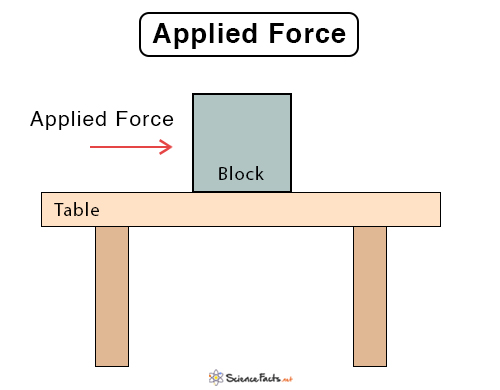Alpha Decay
Alpha decay is a type of radioactive decay in which an unstable atomic nucleus releases an alpha particle to become more stable. An alpha particle consists of two protons and two neutrons, making it similar to the nucleus of a helium atom (4He2) with a +2 charge. During alpha decay, the atomic number of the original element decreases by 2, and its atomic mass decreases by 4, transforming it into a different element. This process helps the nucleus release excess energy and move closer to stability.
Why Does Alpha Decay Occur
Alpha decay occurs when a nucleus has too many protons relative to neutrons, making it unstable. The nucleus emits an alpha particle to become more stable. It reduces the ratio of protons to neutrons in the nucleus, bringing it closer to a more stable configuration.
Alpha decay is more prevalent in heavier elements, which are a group of metals and metalloids that have a high density (> 5 g/cm3) and atomic mass ( between 63 and 200 g mol-1). Their large nuclei struggle to balance the repulsive forces between protons due to electromagnetic interactions, while the strong nuclear force works to keep the nucleus intact.
Alpha Decay Equation
The process of alpha decay can be represented by a nuclear equation, which shows the transformation of the original nucleus, called the parent nucleus, into a new nucleus, called the daughter nucleus.
The general equation for alpha decay can be expressed as:
\[ ^{A}_{Z}X \rightarrow \text{ } ^{A−4}_{Z−2}Y +\text{ } ^{4}_{2}\alpha \]
Where:
– A is the mass number
– Z is the atomic number
–
–
–
When alpha decay occurs, energy is released. The daughter nucleus and the alpha particle are more stable than the parent nucleus. This energy, often referred to as the decay energy, is shared between the former two, primarily in the form of kinetic energy. The alpha particle, being much lighter than the daughter nucleus, carries away most of the energy.
Alpha Decay Examples
1. An example of alpha decay is the transformation of uranium-238 to thorium-234. The nuclear equation for this reaction is:
\[ ^{238}_{92}U \rightarrow \text{ } ^{234}_{90}Th + \text{ } ^{4}_{2}\alpha \]
In this equation, the uranium-238 nucleus loses two protons and two neutrons, becoming thorium-234, while the alpha particle carries away the lost protons and neutrons. The equation balances both the atomic number and the mass number on each side, reflecting the conservation of charge and mass during the decay process.
Other examples include:
2. Radium-226 to Radon-222
\[ ^{226}_{88}Ra \rightarrow \text{ } ^{222}_{86}Rn + \text{ } ^{4}_{2}\alpha \]
3. Polonium-210 to Lead-206
\[ ^{210}_{84}Po \rightarrow \text{ } ^{206}_{82}Pb + \text{ } ^{4}_{2}\alpha \]
4. Americium-241 to Neptunium-237
\[ ^{241}_{95}Am \rightarrow \text{ } ^{237}_{93}Np + \text{ } ^{4}_{2}\alpha \]
Properties of Alpha Particles
We have seen that alpha particles have a charge of +2 and an atomic mass of 4 amu. Here are some more properties:
1. Kinetic Energy: The kinetic energy of alpha particles can range from about 4 to 8 MeV, depending on the specific decay process. The average kinetic energy is around 5 MeV.
The slight variation in this energy is caused by the strong dependence of the process’s half-life on the amount of energy generated.
2. Low Penetrating Power: Alpha particles have very low penetrating power, meaning they can only pass through a small amount of matter before being stopped. This low penetration is due to their large size and double positive charge, which cause them to interact strongly with nearby atoms, losing energy quickly. As a result, alpha particles can be stopped by a few centimeters of air or a thin sheet of paper. Because of this, alpha radiation is generally harmless to human tissue when outside the body, as it cannot penetrate the outer layer of dead skin cells.
3. Low Range: The range of alpha particles in matter is extremely limited due to their high ionization potential. In the air, alpha particles typically travel only a few centimeters before they lose their energy and stop. In denser materials, such as biological tissue or metal, their range is even shorter, often less than a millimeter.
4. High Ionization: As alpha particles travel through matter, they interact intensely with the atoms they encounter, primarily through ionization. Their kinetic energy is high enough to cause significant ionization. Due to their positive charge, alpha particles strongly attract the negatively charged electrons in atoms, causing these electrons to be stripped away. This ionization process results in the alpha particle losing energy rapidly as it moves through the material.
Applications of Alpha Decay
- Smoke Detectors: Alpha decay from americium-241 is used to ionize air in smoke detectors, allowing the device to detect smoke particles and trigger an alarm.
- Cancer Treatment: Alpha-emitting elements are used in targeted alpha therapy (TAT) to destroy cancer cells with minimal damage to surrounding healthy tissue.
- Archaeological Dating: Alpha decay is a key process in radiometric dating techniques, such as uranium-lead dating, which helps determine the age of ancient artifacts and geological formations.
- Space Explorations: Alpha decay is used in radioisotope thermoelectric generators (RTGs) to provide power to spacecraft.
- Industry: Alpha decay can be used in static eliminators, where the ionizing radiation helps neutralize static charges in certain manufacturing processes.
-
References
Article was last reviewed on Wednesday, December 4, 2024









Thank you. We have edited the equation.
I’m just a beginner so excuse the question, but as 2 neutrons and 2 protons are emitted doesn’t the ratio between protons and neutrons remain the same?
What makes the atom unstable and why does it resolve this with alpha?
The proton-to-neutron ratio of the parent and daughter nuclie does not remain the same. The key issue is that large nuclei often have too many protons. This creates strong electrostatic repulsion, making the nucleus unstable.